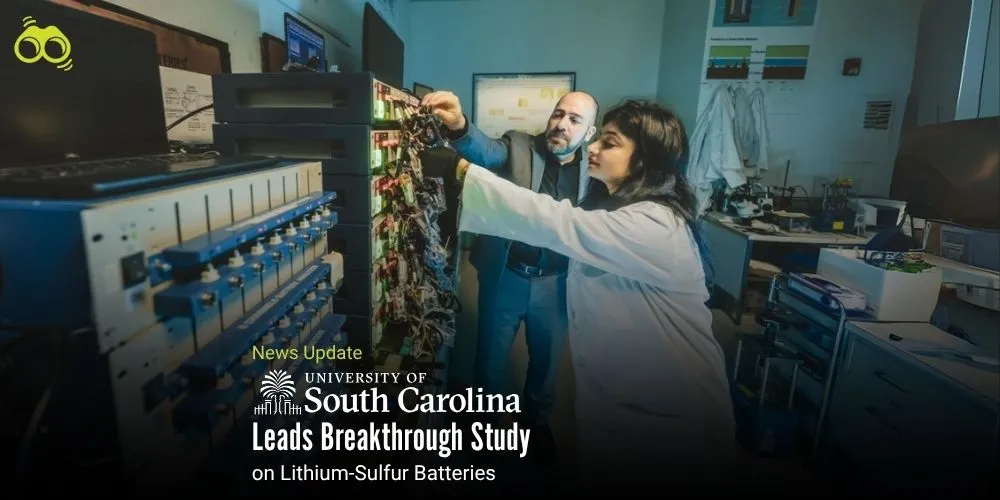Ethical Energy Storage: Researchers Aim to Replace Cobalt with Abundant Sulphur in Rechargeable Batteries
South Carolina Chemists Partner with Industry to Rethink Rechargeable Energy Storage Systems
In an era marked by increasing demand for sustainable and economically viable energy storage technologies, researchers at the University of South Carolina are engaged in an industry-supported study aimed at advancing next-generation rechargeable battery systems. Central to this investigation are lithium–sulphur (Li–S) batteries, which have emerged as a promising alternative to conventional lithium-ion models owing to their superior energy density and reduced dependence on expensive transition metals.
Although Li–S batteries have been under investigation for over four decades, their commercial deployment remains limited. Nonetheless, the substitution of cobalt, nickel, and manganese with abundant sulphur positions these systems as a crucial innovation in the global effort to foster more cost-effective and environmentally responsible energy solutions. Leading the multi-year initiative is Assistant Professor Goli Jalilvand, whose team, funded by NantG Power LLC, is endeavouring to enhance Li–S battery technology by exploring materials and configurations across atomic to macro scales. The research is specifically focused on increasing both energy density and structural durability.
Despite the capacity of Li–S batteries to deliver more than five times the energy density of lithium-ion counterparts, they face degradation challenges that limit their operational lifespan. Current investigations are therefore directed at improving cycle life while maintaining output efficiency. Professor Jalilvand noted that although Li–S systems may not accommodate fast-charging demands, they hold strong potential for aerospace applications, heavy-duty electric vehicles, and grid-scale energy storage.
Functionally, both Li–S and lithium-ion batteries rely on the movement of lithium ions between electrodes, yet they diverge significantly in cathode composition. Whereas lithium-ion batteries are dependent on scarce and costly materials such as cobalt, nickel, and manganese, Li–S batteries employ sulphur, a resource that is widely available, economical, and geopolitically stable. Jalilvand underscored the ethical and economic implications of sourcing cobalt, particularly from the Republic of Congo, and highlighted comparable market volatility associated with nickel and manganese.
Since its inception in 2022, the project has progressed from initial coin cell prototypes into a second phase aimed at real-world configurations, with anticipated completion by September 2026. Supported by a dedicated team of postdoctoral, postgraduate, and undergraduate researchers, Jalilvand affirmed that the complex and evolving nature of Li–S battery systems continues to inspire robust scientific inquiry. The study underscores the enduring relevance and transformative potential of lithium–sulfur batteries in redefining future energy paradigms.
Editor’s Note:
The research led by Assistant Professor Goli Jalilvand at the University of South Carolina is an important step toward solving some of the challenges in energy storage technology. The project focuses on lithium-sulfur (Li-S) batteries, which have the potential to store more energy and perform better than current batteries. It also addresses issues like sustainability and fair use of resources. Unlike traditional batteries that rely on costly and limited materials like cobalt and nickel, Li-S batteries use sulfur, a cheap and widely available material that doesn’t raise major ethical or supply concerns. This makes sulfur a promising alternative for future battery development. The project, supported by battery company NantG Power LLC, shows how working together with industry can lead to practical solutions. These new batteries could be useful in many areas, such as powering aircraft, large electric trucks, or storing energy for electric grids.
Skoobuzz observes that as the project moves into its next phase, the researchers hope their work will lead to battery designs that are better and cheaper and better for the environment. In the long run, this research could help the world move closer to cleaner, more reliable energy systems.














0 Comments (Please Login To Continue)